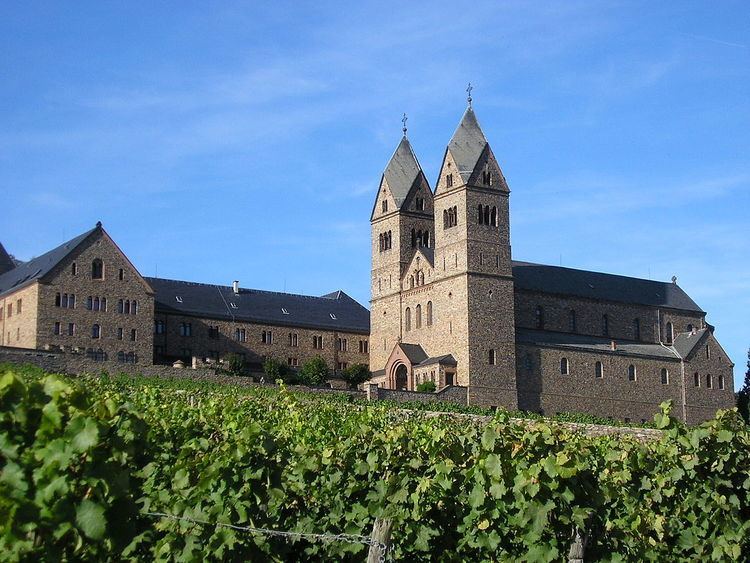Groundbreaking 1900 (1900)s Criteria ii, iv, v | Type Cultural Phone +49 6722 4990 | |
 | ||
Official name Upper Middle Rhine Valley Architectural style Romanesque Revival architecture Similar Eibingen, Disibodenberg, Varensell Abbey, Niederwalddenkmal, Rheingauer Weinmuseum Brömserburg | ||
R desheim am rhein impressionen weinanbaugebiet und urlaubsort
Eibingen Abbey (German: Abtei St. Hildegard, full name: Benedictine Abbey of St. Hildegard) is a community of Benedictine nuns in Eibingen near Rüdesheim in Hesse, Germany. Founded by Hildegard of Bingen in 1165, it was dissolved in 1804, but restored, with new buildings, in 1904. The nuns produce wine and crafts. They can be heard singing their regular services, which were at times recorded. The church is also used as a concert venue. The abbey is a Rhine Gorge World Heritage Site.
Contents
History
The original community was founded in 1165 by Hildegard of Bingen. This was the second community founded by her. It was disestablished in 1804. After the Reichsdeputationshauptschluss (German mediatization), the land once owned by the convent became part of the domains of the prince of Nassau-Weilburg who, in 1831, even bought both the monastery and its church.
The community was reestablished by Charles, 6th Prince of Löwenstein-Wertheim-Rosenberg in 1904 and resettled from St. Gabriel's Abbey, Bertholdstein. The nunnery belongs to the Beuronese Congregation within the Benedictine Confederation. A new building was erected in Neo-Romanesque style. In 1941, the nuns were expelled by the Nazis; they were not able to return until 1945. In 1988, the sisters founded Marienrode Priory at Hildesheim, which became independent of Eibingen in 1998.
The nuns work in the vineyard and in the craft workshops, besides undertaking the traditional duties of hospitality. A visitor watched the nuns using GPS systems, computers and modern kitchen tools. They can be heard (but not seen) singing their regular services. The nuns have recorded their Vespers, which they perform every day. A first recording was made in 1973 and contained only two works by Hildegard of Bingen, a Kyrie and O virga ac diadema. A second recording appeared in 1979, to remember the 800th anniversary of Hildegard's death, including the same pieces and antiphones, a hymn, a responsory and parts of Ordo virtutum. In 1989, a third recording appeared, conducted by P. Johannes Berchmans Göschl, a scholar of Gregorian chant. A reviewer of Gramophone noted about a 1998 recording: "These nuns are living the same life as that of Hildegard's community, singing daily the same Benedictine Office, breathing the same air and trying to capture the spirit of their great twelfth-century predecessor."
Abbesses
From 1603 the abbesses held the title of "Abbess of Rupertsberg and Eibingen".
Since the re-establishment of the community in 1904:
Heritage
The abbey is a Rhine Gorge World Heritage Site. The church has been used for concerts of the Rheingau Musik Festival, such as a "BachTrompetenGala" with organist Edgar Krapp and a concert with the New York Polyphony in 2014. The sculptor Karlheinz Oswald made in 1998 a life-size bronze statue called Hildegard of Bingen, with one copy in the Bingen museum, another in the garden in front of the abbey church.
